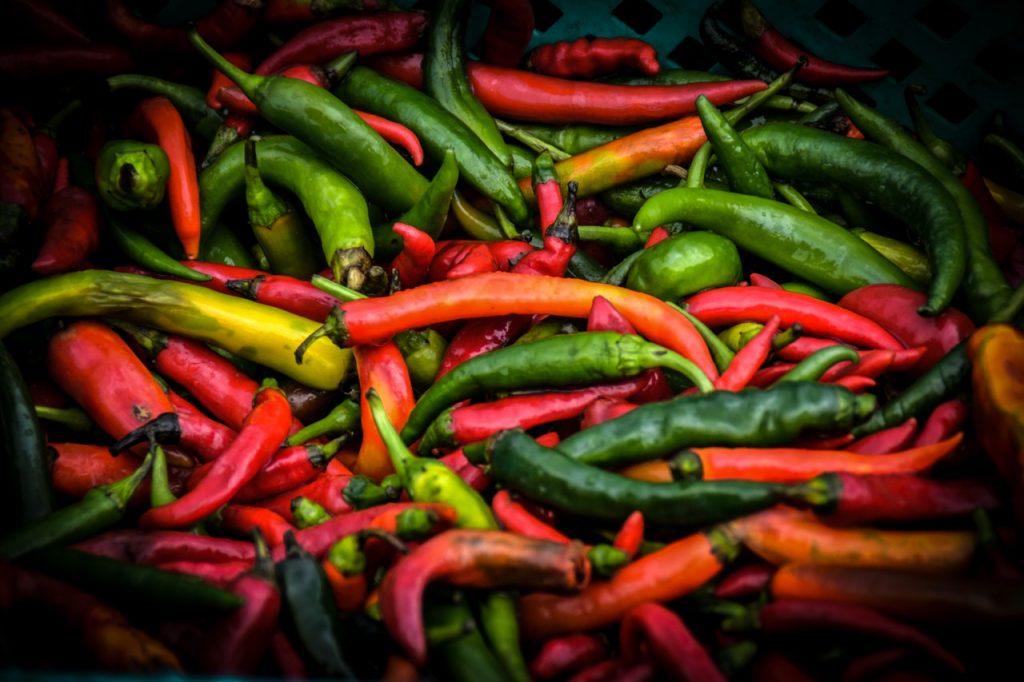Chile peppers are becoming increasingly popular, showing up in everything from jelly to beer!

Here are some spicy facts:
- Capsaicin is the chemical responsible for making peppers hot.
- The amount of heat is measured in Scoville Heat Units (SHU).
- Bell peppers are considered a zero on the scale, while habaneros range from 200,000 — 350,000 units.
Chile Pepper Food Safety Tips
Fresh Peppers
- Rinse well under running water, rubbing gently to clean and remove dirt, especially around the stem area which can be a harbor site for bacteria.
Roasted Peppers
- Whether purchased from a vendor or roasted at home, make sure to refrigerate roasted chiles within two hours after roasting.
- With clean hands or a utensil, transfer peppers from plastic bags to covered containers for refrigerator storage, or a freezer bag or food safe container if freezing.
- Consume within 2-3 days in the refrigerator, or freeze for future use.
Chile Pepper Handling Tips:
- To decrease the heat, remove the seeds and placenta (which contains the highest concentration of capsaicin).
- When working with chiles, wear gloves and glasses to keep the capsaicin oil away from sensitive areas.
- Grab a glass of milk (instead of water) if you eat a pepper spicier than you can handle. The casein in milk binds with the capsaicin oil and helps wash it away from your mouth.


